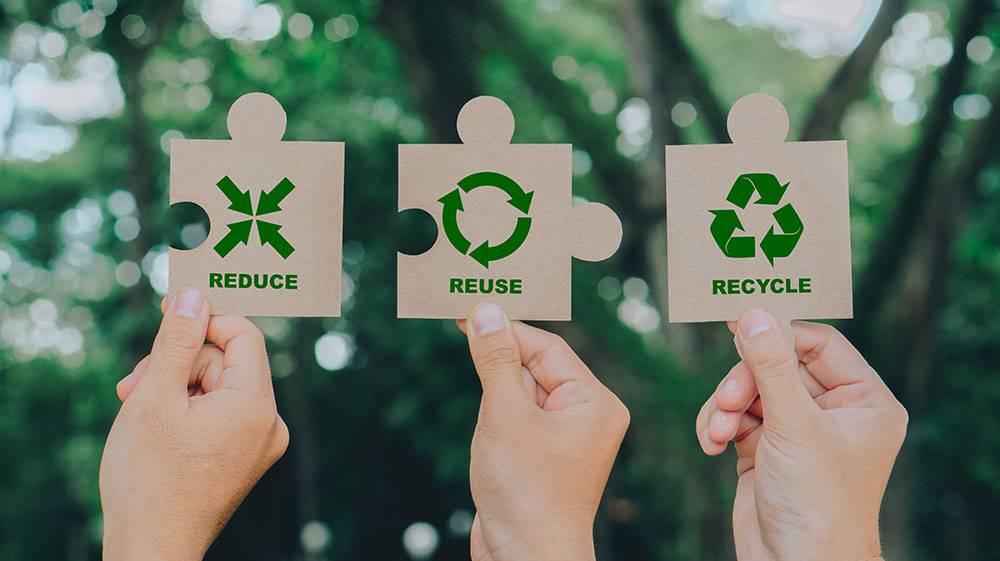
Plastic packaging: is it a problem?
Navigating the intersection of sustainability and convenience, we tackle the complex journey with plastic. How can we reshape our connection to it?

Written by
on
5 minutes to read
 Photo by sutirta budiman on Unsplash
Photo by sutirta budiman on Unsplash
Plastic has been a priceless invention for human advancement. Yet, it also kills marine life and devastates our ocean. It’s a complex history, but let’s quickly learn when was plastic invented, where our relationship with plastic currently stands, and what we can do about it.
In 1869, John Wesley Hyatt invented the first hard plastic as a substitute for ivory. The growing popularity of billiards had put a strain on the demand for slaughtered elephants and Hyatt’s invention undoubtedly saved countless elephants1.
In 1965, Sten Gustaf Thulin patented the plastic bag with the intention of saving trees. He had witnessed the devastation of forests, so he started using plastic bags and kept one folded in his back pocket for reuse2.
 Photo by Teslariu Mihai on Unsplash
Photo by Teslariu Mihai on Unsplash
During WW2, plastic was an important solution for ally forces who were trying to manufacture equipment. Since plastic was relatively easy to make and the ingredients were plentiful, it solved the problem of finite natural resources needed for the increasing manufacturing of weaponry and technology.

Photo by Museums Victoria on Unsplash
But as time went on, and the manufacturing of plastic products became a multibillion-dollar industry, the dark side of this magnificent material began to show its face.
In 1997, a sailor by the name of Charles Moore discovered what we now call the Great Pacific Garbage Patch – one of several great gatherings of plastic in the ocean3.

Photo by Naja Bertolt Jensen on Unsplash
Today, we produce 400 million tonnes of plastic waste each year and humans currently ingest 126 to 142 tiny particles of plastic every day4. It is estimated that by 2050, there will be more plastic in the ocean than fish. We need to reduce plastic pollution.
The root of the word plastic comes from plassein, meaning “to mold or to shape,” and Plastic Bank is focused on doing just that – reshaping our perspective towards plastic and revealing its inherent value. The unique ability of plastic to be remolded and feed our ever-increasing desire for novel consumption allows us to steward the plastic waste we already have. We have enough plastic products in existence, littered throughout our waterways, oceans, and cities. All we need to do is just put it back into the economy through innovative plastic recycling.
Inventions have provided us with so much good – but we’ve had a tendency to invent ourselves out of problems, creating temporary solutions that harm our own cause in the long run. Prioritizing convenience and advancement over sustainability and nature has long-term consequences. Thankfully, we have most of the tools and resources to solve the world’s greatest challenges, but we need to allocate time and resources to design and implement them correctly. Many of the major problems like disease, starvation, or clean water have solutions we take for granted, which proves our ability to find solutions for the billions of people who live in poverty, and our inability to act on them with the salience and immediacy they deserve5.
As consumers we need to understand proper plastic recycling. There’s more to it than people think, but thankfully it is easy to learn. Have a look at plastic products close to you and look for a number at the back or bottom. If it’s a 1 or a 2 it can be recycled, but if it’s anything else it usually cannot be, unless brought to a special facility. See below for the breakdown of the 7 different types of plastic and other ways you can help solve the plastic problem.
1 – Polyethylene Terephthalate (PET or PETE)6
PET is what most plastic bottles are made of. It is often used for food and drink packaging. It is the most recyclable.
2 – High-Density Polyethylene (HDPE)
A denser, thicker and stronger version of PET, HDPE is used to make containers for milk and juices or shampoo bottles, and is also recyclable.
3 – Polyvinyl Chloride (PVC)
PVC is used in cling wrap, medical tubing, and toys. PVC is considered the most hazardous plastic. PVC is not usually accepted at recycling centers and therefore should be avoided.
4 – Low-Density Polyethylene (LDPE)
This is the most used type of plastic in the world and is what creates plastic bags, frozen food bags, beverage cup coatings, squeeze bottles, and so much more. This plastic is quite difficult to recycle and therefore should be avoided.
5 – Polypropylene (PP)
Able to withstand heat, we see this plastic in hot food containers and car parts. It is not usually recyclable.
6 – Polystyrene (PS)
This is the styrofoam we use in food containers, cups, packaging, helmets, and egg cartons. It is not usually recycled.
7 – Other
There are a lot of other types of plastics and most of them can’t be recycled.
How you can help:

Navigating the intersection of sustainability and convenience, we tackle the complex journey with plastic. How can we reshape our connection to it?

Ocean-bound plastic has undoubtedly become a buzzword in the environmental space. You might have heard of it, but…

Discover how CPG companies can turn plastic waste management into a profitable and sustainable practice through collaboration

Photo by Markus Spiske on Unsplash She provides us with the air we breathe, the water we drink, and…